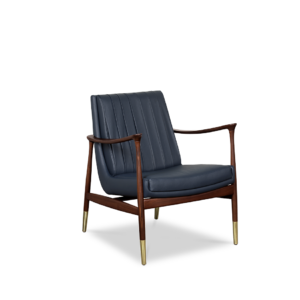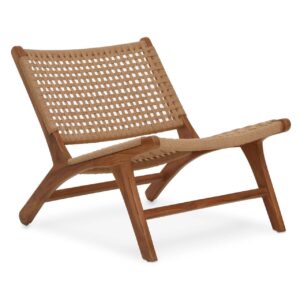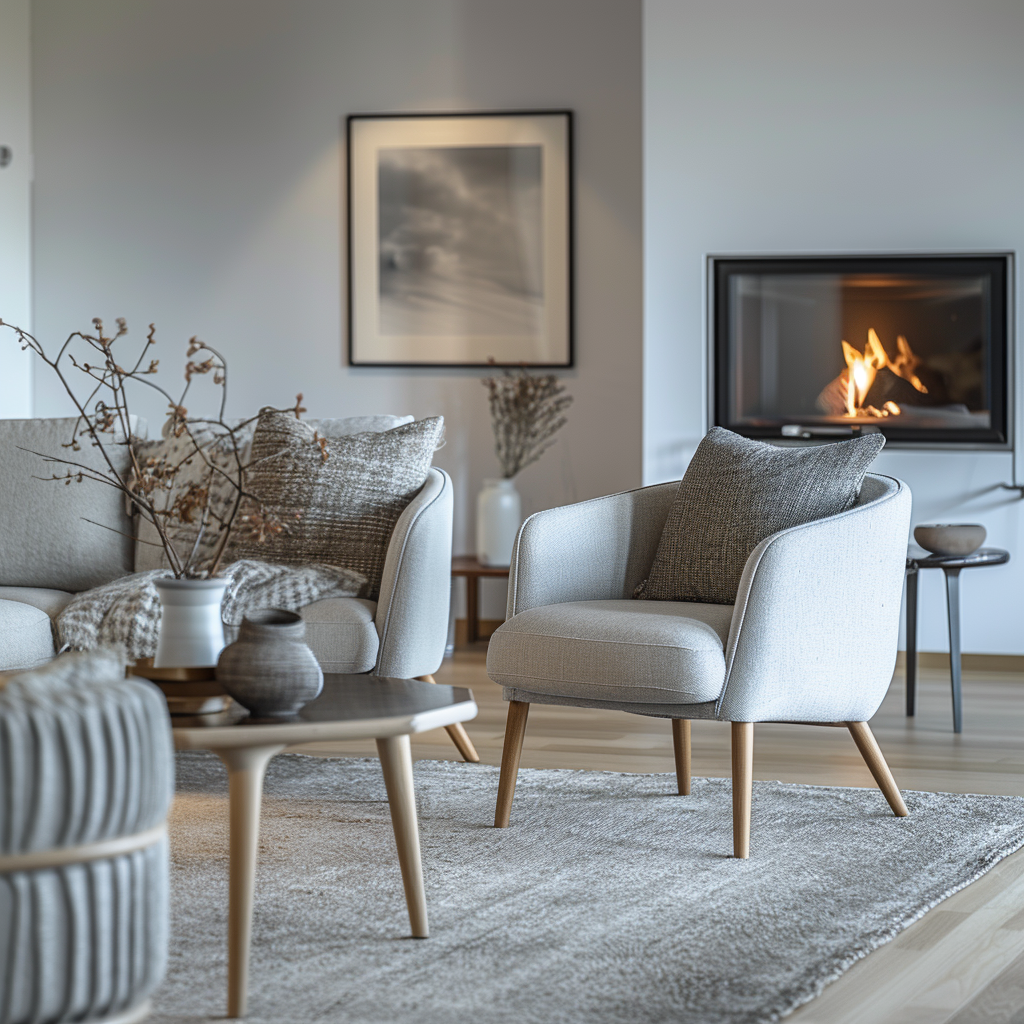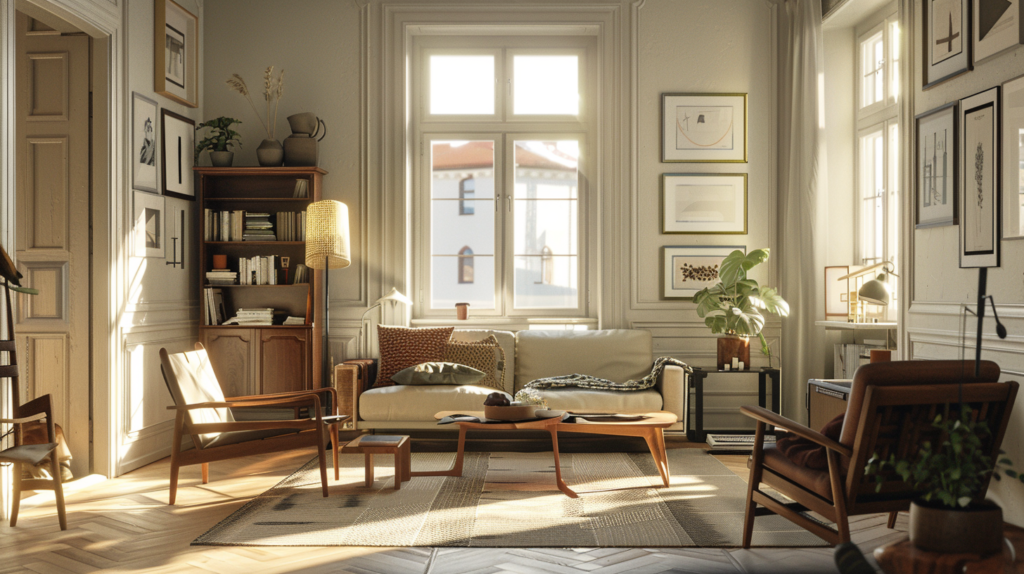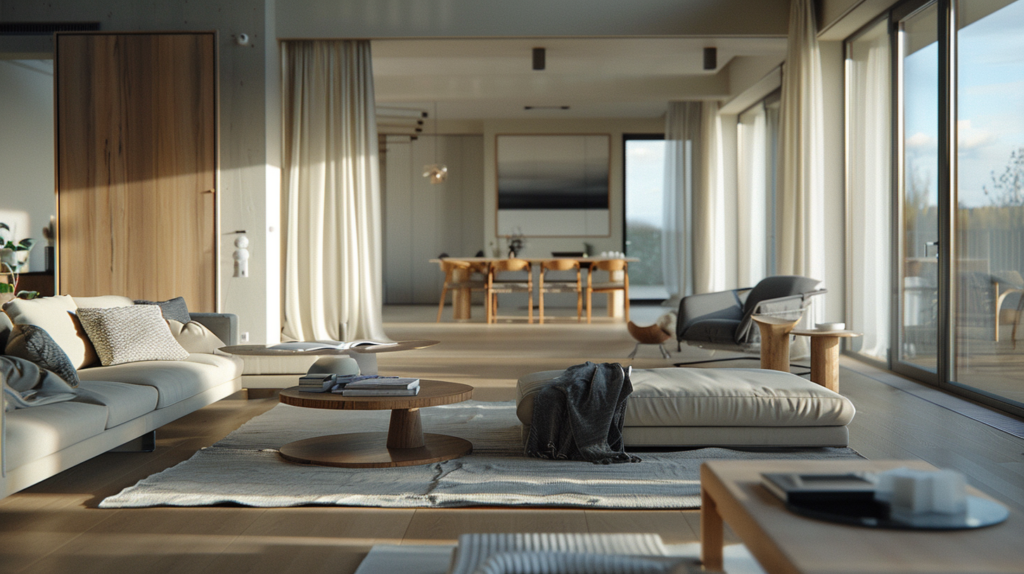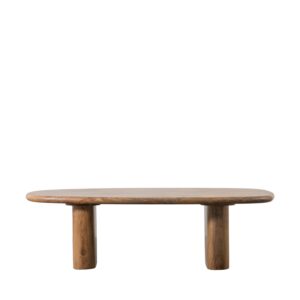Trends
CREATING COSY MINIMALIST SPACE USING SCANDINAVIAN INTERIOR DESIGN
Unveil Luxury, Unleash Comfort – Eclectic Niche.
Scandinavian interior design has captivated the world with its timeless elegance, functional simplicity, and cozy charm. From its origins in the mid-20th century to its enduring influence in contemporary design trends, the essence of Scandinavian style continues to resonate with homeowners, designers, and enthusiasts globally. In this article, we delve deep into the heart of Scandinavian interior design, uncovering its origins, core principles, and transformative power in shaping living spaces. Our purpose is to explore not only the aesthetic elements that define Scandinavian design but also the underlying philosophies and cultural nuances that make it a way of life. By examining key concepts such as hygge and lagom and dissecting core design elements, we aim to provide readers with a comprehensive understanding of what makes Scandinavian interior design both timeless and relevant in today’s ever-evolving world of design.
History of Scandinavian Design
Scandinavian interior design origins can be traced to the mid-20th century, a period marked by rapid industrialization and social change in the Nordic region. Influenced by a combination of historical events, cultural traditions, and visionary designers, Scandinavian design emerged as a distinctive aesthetic movement with global significance. The region’s rapid industrialization and urbanization in the late 19th and early 20th centuries created a demand for practical and efficient living spaces, prompting architects and designers to explore innovative solutions to accommodate the changing lifestyles of urban dwellers. The aftermath of World Wars I and II brought about significant social and economic upheaval, leading to reconstruction efforts focused on rebuilding infrastructure and housing. This emphasis on utility, affordability, and mass production laid the groundwork for the principles of Scandinavian design. Additionally, the establishment of the Nordic welfare state model in the mid-20th century prioritized social equality and access to housing for all citizens, influencing design policies and initiatives. Cultural exchange and collaboration with neighboring European countries, particularly Germany and the Netherlands, enriched the creative landscape of Scandinavian design, contributing to its evolution and diversification over time. Moreover, Scandinavia’s deep connection to nature and tradition of sustainability has fostered an ethos of environmental awareness reflected in the use of natural materials and energy-efficient design practices.
Architects and designers like Alvar Aalto, Arne Jacobsen, Hans Wegner, and Josef Frank played pivotal roles in shaping the trajectory of Scandinavian design, each contributing unique perspectives and innovations. Alvar Aalto, often hailed as the father of Scandinavian design, infused his work with a deep reverence for nature, embracing organic forms and natural materials to create harmonious living environments. Arne Jacobsen’s minimalist approach and iconic furniture designs, such as the Egg Chair, exemplified the clean lines and functional elegance synonymous with Scandinavian style. Hans Wegner’s mastery of craftsmanship and dedication to timeless design principles cemented his status as one of the most influential furniture designers of the 20th century. Additionally, Josef Frank’s eclectic patterns and textiles brought a sense of warmth and whimsy to Scandinavian interiors, challenging conventional notions of austerity. These visionary designers drew inspiration from a variety of sources, including the Bauhaus movement, modernism, and the Arts and Crafts Movement, synthesizing disparate influences into a cohesive design language that reflected the values and aspirations of the Nordic people. Today, Scandinavian interior design continues to evolve, embracing new technologies and materials while remaining rooted in its rich heritage of craftsmanship, functionality, and human-centered design.
-

Hamilton Barnes
Everi Coffee Table
£610 Add to cart -
Sale!

Essential Home
Hudson armchair
£2,261 – £2,842 Select options This product has multiple variants. The options may be chosen on the product page -

North West
Inca Lounge Chair
£372 Add to cart
Key Principles of Scandinavian Design
Scandinavian design is characterized by several key principles and philosophies that have guided its evolution and enduring appeal. These include:
1. Functionality: Scandinavian design prioritizes functionality and practicality. Furniture and interiors are designed to serve a purpose, with a focus on usability and efficiency. This principle is rooted in the idea that good design should improve the quality of everyday life.
2. Simplicity: A core tenet of Scandinavian design is simplicity. Spaces are uncluttered and minimalist, with an emphasis on clean lines and a lack of ornamental decoration. This minimalist approach creates a sense of calm and tranquility in the home.
3. Natural Materials: Scandinavian design emphasizes the use of natural materials such as wood, stone, and leather. These materials add warmth and texture to interiors, creating a connection to the natural world and promoting a sense of well-being.
4. Light and Space: Scandinavian design makes use of natural light and open spaces to create bright, airy interiors. Large windows, white walls, and reflective surfaces help to maximize natural light, creating a sense of spaciousness and serenity.
5. Sustainability: With a deep respect for the environment, Scandinavian design emphasizes sustainability and eco-friendliness. Designers strive to use sustainable materials, energy-efficient technologies, and ethical production practices.
6. Timelessness: Scandinavian design is characterized by its timelessness and durability. Furniture and interiors are designed to last, both in terms of quality and aesthetic appeal. This focus on longevity is in stark contrast to the disposable nature of much contemporary design.
7. Craftsmanship: Scandinavian design values craftsmanship and quality. Many pieces are handmade or produced in small batches, with an emphasis on attention to detail and precision.
8. Democratic Design: Scandinavian design is known for its democratic approach, with an emphasis on accessibility and affordability. The goal is to create well-designed, high-quality products that are accessible to everyone, regardless of income.
Hallmarks of Scandinavian Interior Design
The core elements of Scandinavian design encompass a harmonious blend of simplicity, functionality, and natural beauty. They include:
1. Clean Lines: Scandinavian design is characterized by clean, minimalist lines that create a sense of order and simplicity in interiors. Furniture, architecture, and décor often feature straight edges and geometric shapes, contributing to a sleek and modern aesthetic.
2. Neutral Color Palette: A muted, neutral color palette is a hallmark of Scandinavian design. Whites, grays, and earth tones dominate interiors, creating a serene and cohesive look. These understated hues serve as a backdrop for natural materials and textures to shine.
3. Natural Materials: Scandinavian design celebrates the beauty of natural materials such as wood, stone, and leather. These materials add warmth, texture, and a sense of authenticity to interiors, bringing the outdoors in and creating a connection to nature.
4. Functional Furniture: Functionality is paramount in Scandinavian design, and furniture is designed with practicality in mind. Clean, uncluttered lines and multipurpose designs are common, allowing furniture to serve multiple functions without sacrificing style.
5. Minimalist Décor: Decorative elements in Scandinavian design are kept to a minimum, with a focus on quality over quantity. Simple yet striking décor pieces, such as geometric shapes, natural accents, and statement lighting, add visual interest without overwhelming the space.
6. Abundant Natural Light: Maximizing natural light is a fundamental aspect of Scandinavian design. Large windows, skylights, and strategically placed mirrors help to flood interiors with sunlight, creating bright, airy spaces that feel open and inviting.
7. Cozy Textiles: Despite its minimalist aesthetic, Scandinavian design is also known for its cozy and inviting atmosphere. Soft, tactile textiles such as wool, sheepskin, and cotton are used to add warmth and comfort to interiors, creating inviting spaces that feel like home.
8. Hygge (Hoo-gah): Hygge is a Danish term that encompasses a feeling of coziness, contentment, and well-being. In Scandinavian design, hygge is more than just a design element; it’s a philosophy that guides the creation of warm and inviting interiors. Achieving hygge involves creating spaces that promote relaxation, comfort, and connection with loved ones. This is often achieved through the use of soft, tactile textiles such as wool throws, sheepskin rugs, and plush cushions that invite people to snuggle up and unwind. Warm, ambient lighting, such as candles or soft lamps, adds to the cozy atmosphere, creating a sense of intimacy and relaxation. In essence, hygge is about creating spaces that nurture the soul and encourage moments of simple pleasure and contentment.
9. Lagom (Lah-gom): Lagom is a Swedish concept that translates to “just the right amount” or “moderation.” In Scandinavian design, lagom is about finding the perfect balance between form and function, beauty and practicality, excess and simplicity. This principle encourages designers and homeowners to create spaces that are harmonious, balanced, and uncluttered. Lagom is reflected in the minimalist aesthetic of Scandinavian interiors, where every element serves a purpose and nothing is superfluous. It’s about choosing quality over quantity, investing in pieces that are timeless and durable rather than trendy or disposable. Lagom also extends to the way spaces are lived in and experienced, promoting a sense of balance and equilibrium in daily life.
Substyles of Scandinavian Design
There are variations, ranging from traditional and rustic to modern and minimalist, stemming from regional distinctions among Scandinavian countries, historical transformations over time, global impact, personal expression, and market dynamics. These substyles offer many options for customization and interpretation, enabling individuals to craft spaces that resonate with their unique sensibilities and lifestyles, all while retaining the fundamental tenets of Scandinavian design.
The following are some substyles with their unique characteristics:
1. Traditional Scandinavian: This sub-style pays homage to the roots of Scandinavian design, drawing inspiration from the region’s rich cultural heritage and traditional craftsmanship. Interiors feature natural materials such as wood, stone, and leather, along with folk-inspired patterns and motifs. Furniture tends to be classic and timeless, with an emphasis on quality craftsmanship and functionality.
2. Modern Scandinavian: Modern Scandinavian design builds upon the principles of simplicity and functionality, but with a contemporary twist. Interiors are characterized by clean lines, minimalistic décor, and a neutral color palette. Furniture designs are sleek and streamlined, often incorporating innovative materials and technologies. Modern Scandinavian interiors prioritize openness and light, with an emphasis on maximizing natural light and creating fluid, open-plan spaces.
3. Scandi-Boho: This sub-style combines Scandinavian minimalism with bohemian flair, resulting in eclectic and vibrant interiors. Scandi-Boho interiors feature a mix of natural materials, such as rattan, jute, and macrame, alongside bold patterns, textures, and colors. Furniture and décor tend to be eclectic and collected, reflecting a sense of individuality and personal expression.
4. Scandi-Chic: Scandi-Chic design infuses Scandinavian minimalism with luxurious touches and elegant accents. Interiors are sophisticated and refined, with a focus on high-quality materials and finishes. Furniture and décor often feature subtle nods to Scandinavian design classics, while incorporating elements of glamour and opulence, such as velvet upholstery, metallic accents, and statement lighting.
5. Rustic Scandinavian: Rustic Scandinavian design celebrates the beauty of imperfection and the charm of the countryside. Interiors feature rough-hewn wood, exposed beams, and natural textures, creating a cozy and inviting atmosphere. Furniture tends to be sturdy and functional, with a mix of vintage and handmade pieces that exude warmth and character.
6. Nordic Minimalism: Nordic minimalism takes the principles of Scandinavian design to the extreme, emphasizing clean lines, monochromatic color schemes, and uncluttered spaces. Interiors are stripped down to the essentials, with a focus on simplicity, purity, and tranquility. Furniture and décor are sleek and understated, allowing for maximum visual impact with minimal fuss.
How to Create a Scandinavian-Inspired Space
If you’re looking to create a Scandinavian-inspired space that is both inviting and stylish, here are some practical tips to help you achieve that cozy minimalist ambience.
1. Neutral Color Palette: Start by choosing a neutral colour palette dominated by whites, greys, and muted earth tones. These colours create a sense of spaciousness and serenity, typical of Scandinavian design. Consider painting walls in soft shades like light grey or creamy white to brighten up the space.
2. Natural Light: Maximizing natural light is essential in Scandinavian interiors. Opt for sheer curtains or blinds that allow sunlight to filter through while maintaining privacy. Keep windows unobstructed to let in as much daylight as possible, creating a bright and airy atmosphere.
3. Functional Furniture: Select furniture pieces that prioritize functionality and simplicity. Scandinavian design favours clean lines, minimal ornamentation, and multifunctional items. Invest in comfortable yet streamlined sofas, chairs, and tables that contribute to a clutter-free and cohesive look.
4. Cozy Textures: Incorporate co textures such as wool, linen, and faux fur to add warmth and comfort to your space. Use plush area rugs, soft throws, and textured cushions to create inviting nooks for relaxation. Wooden accents, such as oak or pine furniture, also contribute to a cozy ambience.
5. Natural Elements**: Bring nature indoors by incorporating natural elements like plants, botanical prints, and wooden decor. Indoor plants not only add a touch of greenery but also improve air quality and promote a sense of well-being. Wooden accents, whether in furniture or decor pieces, add warmth and organic charm to the space.
6. Declutter and Simplify: Embrace the minimalist aspect of Scandinavian design by decluttering and simplifying your space. Keep surfaces clear of unnecessary items and opt for storage solutions that blend seamlessly with the overall decor. Consider open shelving for displaying curated collections or functional storage baskets to keep essentials tidy.
7. **Lighting Design**: Pay attention to lighting design to create ambiance and enhance the cozy atmosphere. Incorporate a mix of overhead lighting, task lighting, and ambient lighting sources. Opt for fixtures with a sleek and modern aesthetic, such as pendant lights or minimalist floor lamps, to complement the overall design theme.
8. Personal Touches: Finally, add personal touches and meaningful decor elements to personalize your Scandinavian-inspired space. Display art prints, photographs, or cherished objects that reflect your personality and interests. Avoid overcrowding and maintain a balance between minimalism and individuality.
It is worthy of note that while Scandinavian design is celebrated for its simplicity and functionality, it does pose certain challenges. Cost can be a barrier, as quality craftsmanship and natural materials often come with a higher price tag. Additionally, authentic Scandinavian pieces may not be readily available in all regions, necessitating the search for alternatives. Maintaining light color palettes and natural materials can also be tricky, requiring regular care to prevent stains and damage. Achieving the right balance between minimalism and warmth can be challenging, as can infusing personalization into the design without cluttering the space. Lighting poses another challenge, as not all spaces have ample natural light, necessitating a careful balance of artificial lighting. Finally, balancing trendy elements with timeless design can be difficult, as Scandinavian design emphasizes timelessness but may also incorporate trendy elements. Despite these challenges, thoughtful planning and creativity can help overcome them, allowing for the creation of beautiful and functional Scandinavian-inspired spaces.
In conclusion, the Scandinavian design is a beacon of simplicity, functionality, and elegance, captivating design enthusiasts worldwide. By embracing the core principles of Scandinavian design and leveraging its inherent strengths, we can overcome obstacles to craft spaces that not only exude timeless beauty but also foster comfort, functionality, and inspiration. Whether embarking on a complete interior transformation or seeking to infuse a hint of Scandinavian allure into existing spaces, the key lies in embracing the ethos of Scandinavian design while allowing room for individual expression and interpretation.
-

Hamilton Barnes
Hoff Coffee Table
£510 Add to cart -

Domkapa
Panton Accessories
£1,446 – £2,240 Select options This product has multiple variants. The options may be chosen on the product page



